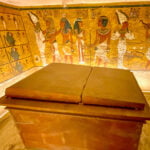Doug Baum, a former zookeeper, maintains a ranch of camels that he hauls to living-history events throughout the South. I first met him back in 2009, when I visited Corinth, Mississippi. He brought a few of his animals to help reenact or tell the story of the US Camel Corps and Old Douglas. Most folks nothing about this curious historical footnote.
How a 2,000-pound camel came to see action in the War Between the States begs a wisp of whimsy, but remains grounded on Mississippi’s hallowed battlefields.

Jefferson Davis, Secretary of War in 1852, believed camels’ tireless reserves, sure-footedness, lack of thirst and the ability to carry heavy loads would enable movement of troops and supplies between California and the western frontier. But, in the 1850s: nary a camel in the nation.
Davis persuaded Congress to establish the US Camel Corps and sent a procurement expedition to the Middle East. After numerous setbacks, bribes, and negotiations, 33 dromedaries were purchased and set sail to return, along with five indentured Middle Easterners. Two months later, the first camel caravan batted their long eyelashes at the surprised residents of Indianola, Texas.

The enormous creatures trekked many days to reach their quarters at Camp Verde, 60 miles west of San Antonio. However, the Texas Army commander hated the beasts under his command, and proclaimed, “I would not give one mule for five camels. They smell, upset the horses and mules, spit, and have disagreeable personalities.”
Few Americans at the time or today understand camel rearing and rarely keep the animals as pets. Doug Baum’s dromedaries are the exception and he lovingly cares for his clan. He admits the creatures are highly sensitive and easily insulted, then adds,” They are sweet and gentle. If you treat them with fairness and remember they have motivations of their own — they won’t bite or spit.”

By the late 1850s, a hundred humps called Texas home. The beasts proved far superior to horses and mules on the treacherous, rocky slopes. Their feet had tough soles that needed no shoeing, they required little water and could live off the fat stored in their humps, and as a bonus–the mere sight of a camel scared off the Indians.

The advent of the Civil War in 1861, radically transformed the mindset and priorities of the entire nation. Camp Verde vacillated under Union and Confederate control and the care and whereabouts of the camels grew lax.


Apparently, a camel named Old Douglas was stationed in Texas when the war erupted. Baum (having thoroughly researched the subject) believes a soldier simply snuck off with the creature and headed home to Mississippi– a feat which surely turned more than a few heads. Somehow, they made the long trip and Old Douglas was given to Colonel W. H. Moore by 1st Lt. William Hargrove. Moore then assigned Douglas to carry the instruments and supplies of the 43rd Mississippi Volunteer Infantry Regimental Band.

Douglas’s first active service commenced under General Sterling Price in the Iuka Campaign near Corinth. Old Douglas quickly attained legendary status by causing a stampede. However, Douglas endeared himself as a camp favorite, befriending young soldiers who proudly carried their new title, “The Camel Regiment.”
Douglas participated in the 1862 Battle of Corinth, a tragic day that ended with 12,000 casualties. He also served at the Central Mississippi Railroad engagement and the Vicksburg siege.

Baum also appears in Vicksburg, Mississippi as did the Mississippi 43rd. The site saw 35,825 estimated causalities from May 18 to July 4, 1863. During one of the skirmishes, a Union sharpshooter intentionally took down the adored mascot. Old Douglas is honored like other veterans with a marked grave in Vicksburg’s Cedar Hill Cemetery.

Visitors to the battlefields of Cornith, Vicksburg, Shiloh, and Gettysburg hear numerous Civil War stories of bayonets and bravery, cavalry and canons, generals and Johnny Reb, but the chronicles recount only one tale of a Confederate camel–Old Douglas, who served his country well.

A short documentary on the US Army Camel Experiment was recently released and has already won awards. You can watch it here:
In January 2020, I met up again with Doug Baum, this time in Egypt. He convinced me to take a 3-day camel trek with the Bedouin in the South Sinai region. When my story on that trek is published, I will add a link here.






